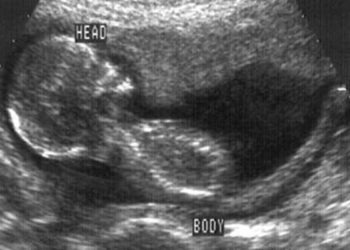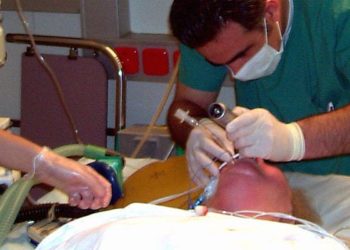Post-extubation high-flow nasal cannula associated with higher rates of treatment failure in preterm infants
1. Rate of treatment failure within 7 days of extubation was higher in patients that received post-extubation high-flow nasal cannula (HFNC), as compared to those that received nasal intermittent positive pressure ventilation (NIPPV) or nasal continuous positive airway pressure (NCPAP).
2. Histologic chorioamnionitis, treated patent ductus arteriosus (PDA), and younger corrected gestational age at the beginning of treatment were each associated with HFNC treatment failure.
Evidence Rating Level: 1 (Excellent)
Study Rundown: HFNC has recently become popular as a mode of non-invasive ventilation for infants, with its safety and efficacy well-documented. The present study aims to better understand the efficacy of HFNC, as compared to NIPPV and NCPAP, in preventing failure of extubation. To do this, authors conducted a prospective multicenter randomized trial in preterm infants requiring non-invasive ventilation after extubation, with patients randomized to the HFNC group or the NIPPV/NCPAP group. The study found a higher rate of treatment failure, defined as having to switch to an alternate mode of ventilation, within 7 days of extubation in the HFNC group. Histologic chorioamnionitis, treated PDA, and younger corrected gestational age at the beginning of treatment were each associated with HFNC treatment failure. One weakness of this study is that respiratory medications such as caffeine citrate may have been differentially used in the two groups, which the study did not control for. The results of this study may help direct post-extubation airway management in preterm infants, showing that NIPPV/NCPAP may be of greater benefit than HFNC in preventing treatment failure.
Click to read the study, published today in Pediatrics
In-Depth [randomized controlled trial]: To better understand the efficacy of HFNC as compared to NCPAP/NIPPV, this study carried out a randomized prospective multicenter trial in preterm infants born before 34 weeks of gestational age who required invasive mechanical ventilation in Japan. The primary outcome was post-extubation treatment failure, defined as requiring a different mode of ventilation within 7 days of extubation. There were 176 patients in the HFNC group and 196 patients in the NCPAP/NIPPV group, with baseline characteristics being similar between the two groups. In the HFNC group, 54 of 176 (31%) patients had post-extubation treatment failure, while 31 of the 196 (16%) patients in the NCPAP/NIPPV group had treatment failure (risk difference 14.9%; 95% CI 6.2-23.2). Additionally, treatment failure within 72 hours of extubation occurred in 45 of the 176 (26%) patients in the HFNC group and 30 of the 196 (15%) patients in the NCPAP/NIPPV group (risk difference 10.2%; 95% CI 1.9-18.3). Outcomes such as reintubation within 7 days of extubation, rate of nasal trauma, chronic lung disease at 36 weeks corrected gestational age, and death before discharge were not significantly different between the two groups. Within the HFNC group, factors associated with treatment failure were histologic chorioamnionitis (aOR 2.92; 95% CI 1.17-7.31; P = 0.02), treated PDA (aOR 3.61; 95% CI 1.62-8.07; P = 0.002), and younger corrected gestational age at the beginning of treatment (aOR 0.76; 95% CI 0.61-0.94; P = 0.008).
Image: PD
©2020 2 Minute Medicine, Inc. All rights reserved. No works may be reproduced without expressed written consent from 2 Minute Medicine, Inc. Inquire about licensing here. No article should be construed as medical advice and is not intended as such by the authors or by 2 Minute Medicine, Inc.







